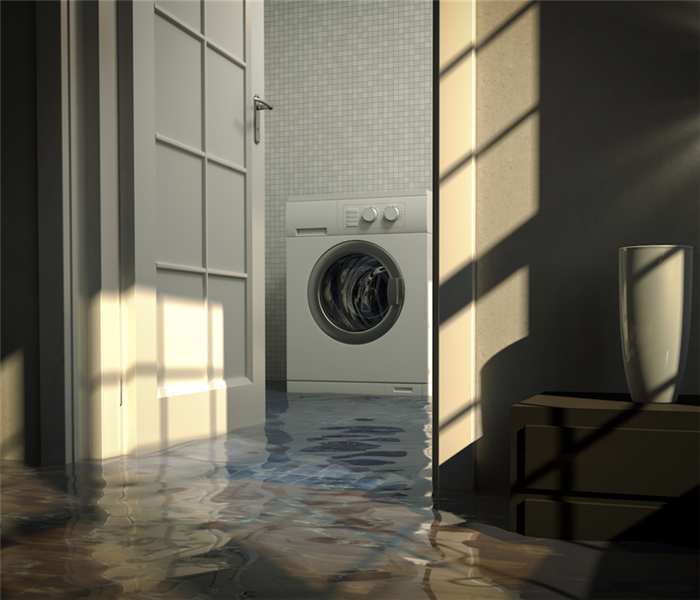What Are the Different Ways of Removing Water from My Clinton Home?
4/26/2020 (Permalink)
 Our SERVPRO team has experience and is equipped with the tools to effectively remediate the water damage in your home. Call right away.
Our SERVPRO team has experience and is equipped with the tools to effectively remediate the water damage in your home. Call right away.
Our SERVPRO Team Has Multiple Tools for Efficient Extraction and Drying Suited to Different Circumstances.
Much of the successes that our SERVPRO team has seen over the years in Clinton can get traced back to our ongoing commitment to utilizing the best tools and strategies for extraction, drying, and cleaning. Every water loss incident comes with its own set of unique obstacles for our responding technicians to overcome, and we can do this through the use of advanced technologies.
From thorough, whole-house drying to water extraction in your Clinton property, the tools make the process more efficient or more complicated to perform. With ongoing training and education in the restoration niches, our professionals can better determine the best devices and equipment in water recovery. Efficient extraction and drying reduces costs for homeowners and can reduce irreparable damage to the contents of the residence as well.
What Tools Get Used for Removing Standing Water?
Extraction and drying must be one of the first steps to recovery of your Clinton water-damaged home. Standing water can deteriorate sensitive materials like drywall and wood flooring within short periods, so it is vital to get water removal efforts started as soon as possible. The choice in these machines and attachments involves the affected materials, the size of the damaged area, and the severity of the standing water itself. Some of the options include:
- Submersible Pumps
- Wet Vacuums
- Specialty Tools
The mentioned specialty tools can include many of the attachments and standalone devices that our SERVPRO team uses for removing trapped moisture in materials. Carpets, for example, can benefit from the use of our carpet wand while tiled floors might do better with the squeegee wands that we can also attach to bigger units like the wet vacuums.
What Types of Submersible Pumps Does SERVPRO Use?
Submersible pumps can be the backbone of effective extraction and water removal efforts. Choosing equipment that can work efficiently reduces the time that restoration takes. Choosing the right type of submersible pump is critical to this process, as choices can get made based on the presence of solids, the depth of the standing water, and how accessible the damaged areas might be. The three primary types of pumps our SERVPRO team uses are:
- Electric
- Gas-Powered
- Truck-Mounted
Electric pumps are among the most common choices, especially in clear-water incidents where debris and solids are not a threat within the standing water. These pumps often run on a traditional 110V power supply, making them versatile in home uses where available outlets exist or allow them to run more easily along with other tools and equipment off a single generator.
What Can Wet Vacuums Do for Water Damage?
While submersible pumps can often get used to reduce the water down to manageable depth, wet vacuums are vital to take it the rest of the way. When standing water is less than two inches in depth, wet vacuums and their respective attachments can be vital in finishing the work of removing surface water. Here are some of the advantages of using a wet vac for water removal:
- Surface Water Removal
Submersible pumps lose their prime and functionality once the depth of standing water in a residence has reached a specific point. Removing surface water in this manner exposes flooring and other saturated materials to our technicians for cleaning, debris removal, and focused drying efforts.
- Varying Attachments
Numerous attachments can get used with wet vacuums that make them an even greater asset to water restoration and recovery teams. Carpet wands attached to powerful wet vacuums can help to remove the majority of trapped water from the fibers of your carpet. Likewise, light wands can help to reach inaccessible areas.
- Versatile and Mobile
One of the most significant advantages of choosing wet vacuums for extraction is the versatility and mobility of these units. Most of the machines are lightweight, making them excellent restoration tools for multiple-story extraction needs.
Can a Soggy Carpet Get Saved?
Carpets are an everyday construction staple to area homes, and it can sometimes be a challenge to preserve these materials after a water loss incident. It does not take long for the surface layer to become completely saturated, allowing penetration to the padding and subflooring levels beneath it. A probing moisture meter can determine the extent and spread of moisture and water damages. After the use of a carpet wand to remove a large portion of the trapped water, we can utilize drying practices like floating the carpet with a positioned centrifugal air mover between the top and padding layers of the carpet floor system to dry both simultaneously. While it is not always possible to restore and protect damaged carpets, we do have methods that can often work.
Water losses can be devastating if they do not get addressed quickly in your home. Our SERVPRO of Greater Hunterdon County team can help 24/7 when you call (908) 788-8770.

 24/7 Emergency Service
24/7 Emergency Service